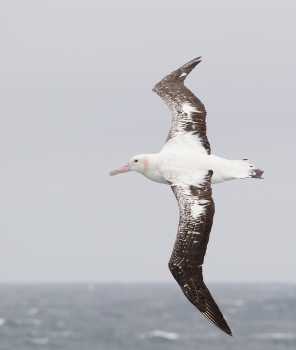Sarah Gutowsky (Department of Biology, Dalhousie University, Halifax, Nova Scotia, Canada) has published early online in the free-access journal Marine Ornithology on developing a conceptual framework for the drivers of albatross movements at sea utilizing bio-logging information from a total of 117 peer-reviewed papers published between 1990 and 2015 and covering 20 of the 22 albatross species.
The paper’s abstract follows:
“The objective of movement ecology is to understand the connections among factors that drive why, when, where, and how organisms move. The basic movement ecology framework (MEF) envisions how four major components (internal state, navigation capacity, motion capacity, and external elements) interact to generate an individual’s movement path. Empirical studies of movement have become increasingly sophisticated as a result of advancements in animal-attached biologging technologies that estimate movement paths. These tools have been applied extensively in the study of marine animal movement, particularly the highly mobile and threatened albatrosses (Diomedeidae). Despite the volume of albatross-biologging movement research, the complex factors and processes that govern the movements of these birds have not before been unified into a comprehensive framework. This paper aims to accomplish two main objectives: (1) integration of ideas from across disciplines to build a custom MEF for albatross, resulting in the identification of 45 discrete factors and their interactions; and (2) use of this MEF to survey the albatross-biologging movement literature for trends, shortcomings, and future directions. As the sophistication of analytical and biologging tools continues to grow, so too will the breadth and complexity of processes invoked and investigated to explain albatross movements at all spatiotemporal scales.”

A Wandering Albatross at sea: the most tracked species, photograph by John Chardine
Reference:
Gutowsky, S.E. 2017. A conceptual framework for the drivers of albatross movement. Marine Ornithology 45: 23-38.
Appendix 1: Supplementary Information — Results of albatross-biologging movement literature review
John Cooper, ACAP Information Officer, 10 January 2017

 English
English  Français
Français  Español
Español